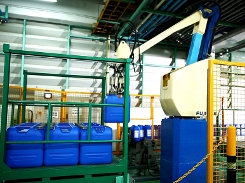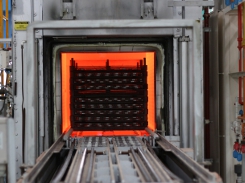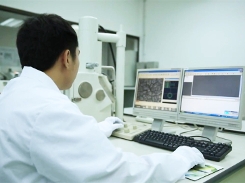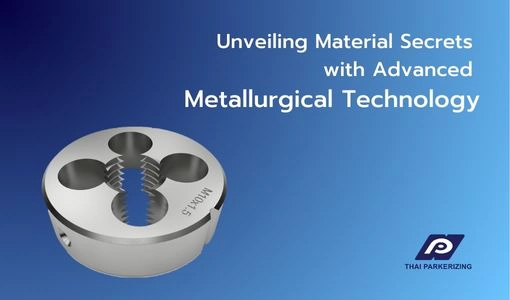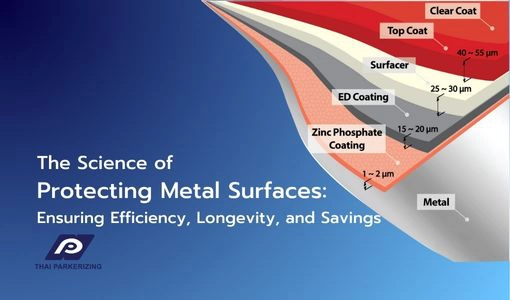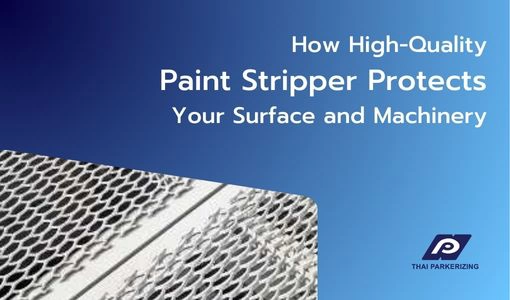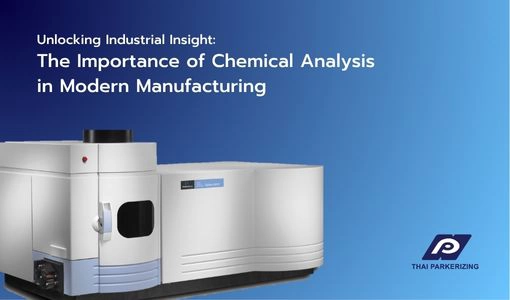- Corporate
- Chemical Products
- Chemical Controller
- Chemical for Paint Booth
- Coil Coating
- Degreasing and Cleaning chemical
- Heat&Cool exchanger (PLATECOIL)
- Hydrophilic
- Manganese Phosphate
- Nano-coating (Pallucid)
- Rolling Oil
- Rust Preventive Product
- Stearate Soap Lubricant/Dry-in-Place Lubricant (PULS)
- Trivalent Chromium/Non-Chromium
- Zinc Phosphate/Iron Phosphate
- Processing Services
- Laboratory Services
- Articles
- What's New
- Contact Us
- Privacy Policy
Why Shot Peening is Essential After Heat Treatment?
04 July 2025
What is Shot Peening?
Heat treatment is essential in transforming raw metal into high-performance components. It hardens, tempers, and alters the internal structure of the material, but it also leaves behind something unwanted: tensile stress. This invisible threat can shorten the lifespan of even the toughest parts, which is where shot peening comes in.
Shot peening is a cold working process in which the surface of a metal component is bombarded with small spherical media, known as shots, to create compressive residual stress. This treatment significantly improves mechanical properties and surface integrity.
How Shot Peening Works
- Tiny metal, glass, or ceramic beads are propelled at high velocity.
- Each shot acts like a mini hammer, plastically deforming the surface.
- The surface is compressed, which counters tensile stresses.
- This prevents the initiation and growth of cracks.
Key Takeaway
“Think of shot peening as giving your metal parts a protective armor after they've been heat-treated.”
Why Shot Peening Is Always Recommended After Heat Treatment
When metals are heat-treated, whether for hardening, annealing, or tempering, the cooling and structural shifts often induce residual tensile stresses near the surface. These microscopic tensions act like ticking time bombs, weakening the material’s resistance to fatigue and corrosion.
Shot peening solves this by:
- Neutralizing tensile stress with compressive stress
- Creating a work-hardened surface layer that resists microcracks
- Improving fatigue strength
In many industries, skipping shot peening after heat treatment is not just sub-optimal, it’s a critical flaw!
Shot Peening in Action: Real-World Examples
|
Industry |
Components Treated |
Results Gained |
|
Aerospace |
Turbine blades, gears |
Increased fatigue life, safety margin |
|
Automotive |
Springs, crankshafts |
Reduced cracking, longer service cycles |
|
Oil & Gas |
Drill bits, valves |
Improved corrosion resistance |
|
Medical Devices |
Implants, surgical tools |
Enhanced durability, surface stability |
Shot Peening vs Other Finishing Processes
|
Process |
Purpose |
Does it induce compressive stress? |
|
Shot Peening |
Fatigue resistance & hardening |
Yes |
|
Sandblasting |
Cleaning/roughening |
No |
|
Polishing |
Smooth surface finish |
No |
|
Case Hardening |
Surface hardening |
Not residual stress-focused |
The Science of Stress: Why Compressive > Tensile
Tensile stress tries to pull a material apart, while compressive stress pushes the material in on itself. When cracks form, it's usually because tensile stress exceeds the material's limit. Shot peening turns the tables:
“By converting harmful tensile stress into protective compressive stress, shot peening creates a permanent barrier against fatigue failure.”
This shift in surface dynamics is the core reason peened components last dramatically longer under repeated or fluctuating loads.
Shot peening is most valuable immediately after heat treatment, especially when:
- The component is exposed to cyclical loading
- There's a risk of crack propagation due to surface tension
- The part has undergone machining or grinding, which weakens the outer layers
- Long-term corrosion resistance is essential
Skipping it means leaving your investment vulnerable to early failure.
Shot Peening: Key Facts
- Shot peening corrects the hidden weaknesses left by heat treatment.
- It improves fatigue life, surface strength, and corrosion resistance.
- Essential for high-performance sectors: aerospace, automotive, oil & gas.
- Precision control of shot size, velocity, and coverage is critical.
- Components that undergo peening last longer, fail less, and perform better.
Thai Parkerizing Co., Ltd. is one of Thailand’s leaders in surface treatment, rust preventive and the heat treatment industry for over four decades.
For more information about our products or services, contact us via telephone, email or the website contact form.
Related products
Tag :


